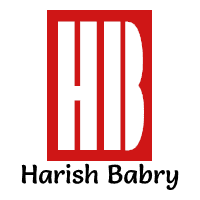Everybody knows a great resume is essential—but not everybody knows how to write one.
A good resume is a significant part of any job seeker’s interviewing and selection process. Despite this, many job seekers seem to ignore the fact that their resume is the single most critical factor in determining if they will be considered for a particular position.
Writing a great resume can be the difference between getting and not getting the job you want. But, writing a great resume isn’t easy. There are different skills required for writing a resume than for writing an ordinary letter. You do not have to learn how to “write a book” to write a great resume. This simple-yet-powerful guide will teach you how to craft an impressive resume that will make a recruiter, hiring manager, or human resources professional take notice.
Here are seven proven tips for making your resume more appealing to a potential employer:
Apply to different jobs with different resumes
Your resume must be tailored to each position that you wish to apply for if you wish to stand out from the crowd. Resume experts say it’s better to “customize your resume for each position you are applying for” instead of trying to create one big masterpiece that will wow every employer. This advice makes sense because the way you format your resume will probably be different for each company, as will the order of the bullets you use to describe your skillset.
The first thing you should do is read the job posting very carefully. Look for words or phrases that are important to the employer, such as expertise in software applications, working with clients, system engineering knowledge, or any other unique selling proposition (USP) that you possess.
Include a Personal Statement instead of an Objective Statement.
In today’s world, the employer doesn’t need to know what you want—they need to understand why you want it. So, to begin the process of convincing them that you are indeed passionately in tune with their company’s needs, write a personal statement instead of a plain ol’ Objective Statement.
A personal statement is a brief explanation of your life and accomplishments that prospective employers can use to see what makes you stand out from your competitors. It should be a 30-sec elevator pitch that explains who you are and what you are looking for. Explain to a potential employer what you excel at, what you are most passionate about, and how you can contribute to the company.
When writing a personal statement, the first thing you need to do is briefly tell your story. What you want to do is give an overview of your profession. Tell what you have done in such a way that shows what you are best at. What you enjoy doing and what you are skilled at. What you have accomplished.
Include Keywords
Keywords play a significant role in determining how well a candidate meets the specific requirements of the job. Many companies use some screening process to identify suitable candidates. Use the keywords from the job description throughout your resume to prove you are fit for the job.
Include the common keywords, terminology, and key phrases that appear frequently in the job descriptions of your target role in your resume (assuming you possess those skills). You will get past the first stage of screening to reach the recruiter or hiring manager.
Provide company description
Recruiters benefit from knowing the size of the company where they worked previously.
As with most other components of a resume, the company description should be tailored to the professional’s objectives.
Well, if it’s a big company, that’s good. It means that you worked for a large, successful company. However, if it’s a small company, that’s not so good. In that case, it might mean that you worked for a struggling company or maybe even a company that went bankrupt. No matter what, you should always try to put your best foot forward when you are doing a company description. Don’t lie about the size of the company you worked for. Don’t try to make it seem like you worked for a larger company than you actually did. That will haunt you in the future. An employer reading your resume will be able to determine whether you were truthful in describing your previous employers.
List of achievements in two to five bullet points.
The list should be short and sweet. If you can condense your list of achievements down to two or three bullets, do so. When it comes to bullet points, longer is not better. In fact, studies show that a list of more than seven benefits tends to decrease the perceived value of a marketing message.
It’s imperative to make it as simple as possible for recruiters to see why you are a great candidate. They receive so many resumes at a time. Blocks of text that are too dense are difficult to read.
Under each position or experience you have held, explain what you contributed to or supported. While you build up your knowledge, keep your bullets for bragging rights.
Quantify your experience by adding measurable results
Quantifying your experience is another one of those “tricks” many experienced professionals overlook when trying to describe their achievements. However, it is the easiest way to instantly make your accomplishments more understandable and believable to a hiring manager. By the way, did you know people can sense when you are “padding” your résumé? They can tell right away if your description of your skills and accomplishments is inflated or not. Don’t be a phony. Make your actions genuine and honest. Be direct and transparent about what you did and how you did it.
A good rule is to use the “result BY action” sentence structure whenever possible.
Make your resume ATS bot readable.
ATS bots are currently reading resumes at a rate of about 2,000 per second. That means they will read everything you upload to the ATS in about three to five seconds. Therefore, the first impression a recruiter or human reader gets when looking at your resume is hugely important. If it’s a good one, you’ll likely get read and considered for an interview. If it’s a bad one, you may never see the light of day. So, what should you include in your resume to make it ATS bot readable? Here are some things to think about:
The ATS bots do not have human intelligence. They want to see clear, concise information. You are more likely to get read if you provide more information. But, do not put too much info on your resume. A simple sentence or two will be sufficient to let the reader know what you are all about most of the time. Put your best foot forward. Provide a clear, concise summary of your most relevant experience. If you are applying for a job as an Engineer, don’t tell them everything you did as an Engineer. Instead, tell them what kind of programming you did and focus on the essential aspects to the employer. If possible, use everyday language. If not, use plain English. Use a simple word instead of one that sounds fancy.
Conclusion
In conclusion, the secret to getting a job is not necessarily to “sell” yourself; it’s to stand out from the crowd. A strong resume shows that you are detail-oriented and organized. It highlights your ability to complete projects on time and under budget. It reveals that you have excellent attention to minor points, such as spelling and formatting. Make your resume more attractive to a potential employer by making it easy for him to find you. Make each section short and sweet, and be sure that all formatting is consistent. Use bold, italics, and underline only when needed. Also, make sure that it is easy to read. Easy-to-read resumes get viewed and downloaded dozens, even hundreds of times longer than hard-to-read resumes.
Download my free Resume-in-Print template and start writing your best self-promotion yet.










